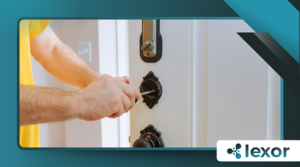DIY vs Professional Installation: What’s Best for Smart Homes?

DIY vs Professional Installation: The allure of a smart home, a dwelling that anticipates your needs, is undeniable.
Smart lighting, thermostats, security systems, and entertainment hubs all promise an integrated, effortless lifestyle.
Yet, transforming a regular house into a smart sanctuary presents a fundamental question. Is the journey best navigated alone, or with a seasoned guide?
This complex choice demands a careful weighing of expertise, cost, time, and future scalability.
The answer is rarely absolute; it hinges on individual circumstances and technical aptitude. Every wire connected and every device configured impacts the seamless operation of your entire ecosystem.
Decoding the DIY Path: Empowerment and Pitfalls
For the tech-savvy, the DIY vs Professional Installation debate often tilts toward self-reliance. Do-It-Yourself (DIY) installation offers the ultimate in customization and control.
You select every component, understand its precise function, and handle the integration personally.
The Allure of Autonomy and Savings
One of the most attractive aspects of the DIY approach is the significant cost savings on labor.
By dedicating your weekends and evenings to the task, you pocket the installation fee. This hands-on experience also translates into intimate knowledge of your system.
Should a component fail or require a setting tweak, you are already the expert technician. This self-sufficiency can be incredibly empowering and satisfying.
It’s the difference between driving a car you built and one you simply purchased.
The Hidden Costs of Time and Trouble
However, the DIY route is fraught with potential roadblocks. Integration complexities, especially between devices from different brands, can turn a simple task into a frustrating, multi-day ordeal.
++Top 5 Beginner Mistakes in Cryptocurrency
Time is a finite resource, and the hours spent troubleshooting can quickly negate the financial savings.
Furthermore, a poorly executed installation, particularly with security or networking, can create vulnerabilities.
Think of the amateur electrician who leaves a ground wire unattached. A small error can have large consequences.
++Smart Lights Explained: How They Work and Why You Need Them
Embracing Professional Installation: Expertise and Peace of Mind

Opting for professional installation shifts the burden of complexity and guarantees a high level of expertise.
When considering DIY vs Professional Installation, a professional service offers a certified, streamlined setup. They ensure everything works together from day one.
Guaranteed Integration and Future-Proofing
A key advantage of professionals is their experience with diverse systems and sophisticated network topography.
++Building a Smart Home Office: Tools and Tips
They understand subtle issues like Wi-Fi range extenders and mesh networks that maintain system stability.
A professional installer ensures robust connectivity, a non-negotiable for a functioning smart home.
According to a 2024 analysis by Parks Associates on smart home adoption, over 60% of consumers who use professional installation for smart home devices cite “better performance and reliability” as a key factor.
This statistic underscores the value of expert execution. Professionals future-proof your system, recommending scalable solutions rather than quick fixes.
++Constructing Your Smart Home: DIY vs. Professional Installation
The Investment in a Seamless Experience
While the upfront cost is higher, you are paying for peace of mind and certified results.
Imagine a concert pianist performing a complex concerto; they have the training and practice to make it appear effortless.
Similarly, professional installers execute complex integrations flawlessly.
For example, integrating a whole-house audio system with lighting scenes requires precise timing and programming logic.
An expert can configure this in an afternoon, while a homeowner might spend a week wrestling with various apps and protocols.
This saved time and guaranteed functionality is a substantial return on investment.
The Crucial Balancing Act: When to Go Which Way
The choice hinges on the project’s scope. For simple, single-device installations, like replacing a light switch with a smart dimmer, DIY is likely the best path. The difficulty and risk are minimal.
An Original Example: The Security System Analogy
Consider your smart home as a finely tuned racing sailboat.
The DIY enthusiast might successfully rig the main sail (install a smart speaker) but struggle with the complex hydrofoil system (a multi-camera security network with facial recognition).
The professional, however, knows the precise angle and calibration needed for peak performance.
A security system, for instance, involves critical wiring and network segmentation that should not be left to chance.
Conversely, a simple DIY vs Professional Installation project like a single smart thermostat is easily managed.
Most manufacturers design these with consumer-friendly interfaces, making them plug-and-play.
Making the Informed Decision
The decision between DIY vs Professional Installation is fundamentally a trade-off between savings and expertise.
Are you prepared to become the system administrator for your home, dedicating significant time to ongoing maintenance and troubleshooting?
Or do you prioritize a seamless, high-performance system backed by a warranty?
Conclusion: Crafting Your Ideal Smart Life
Ultimately, the best approach is often a hybrid one. S
tart with simple DIY projects to build confidence, but delegate the complex or critical systems—like advanced security or integrated networking—to professionals.
This blended strategy captures the cost-saving benefits of self-installation while ensuring a reliable foundation.
Why risk the integrity of your network when you can invest in guaranteed performance?
The smart home is an investment in your future comfort and security. Choosing the right path ensures that investment pays dividends in convenience, not frustration.
Frequently Asked Questions
Q: Is professional installation always necessary for security systems?
A: While technically possible to DIY, professional installation is strongly recommended for security systems.
It ensures optimal camera placement, robust network encryption, and proper integration with monitoring services, which are critical for true home protection.
Q: How do I know if my existing wiring can support smart home devices?
A: A professional installer can conduct an initial assessment of your home’s electrical and network infrastructure (Wi-Fi strength, router capacity).
This crucial step often reveals limitations or necessary upgrades before you purchase equipment.
Q: Does professional installation usually include technical support?
A: Yes, reputable professional installers typically offer a warranty on their labor and a defined period of post-installation technical support, which is a major advantage over troubleshooting a DIY setup alone.
Q: Is a smart hub a necessary component for most smart homes?
A: For complex or multi-brand systems, a central smart hub (like SmartThings or Apple HomeKit) is highly beneficial.
It acts as a translator, allowing devices with different communication protocols (Zigbee, Z-Wave, Wi-Fi) to speak to each other, creating true automation.
